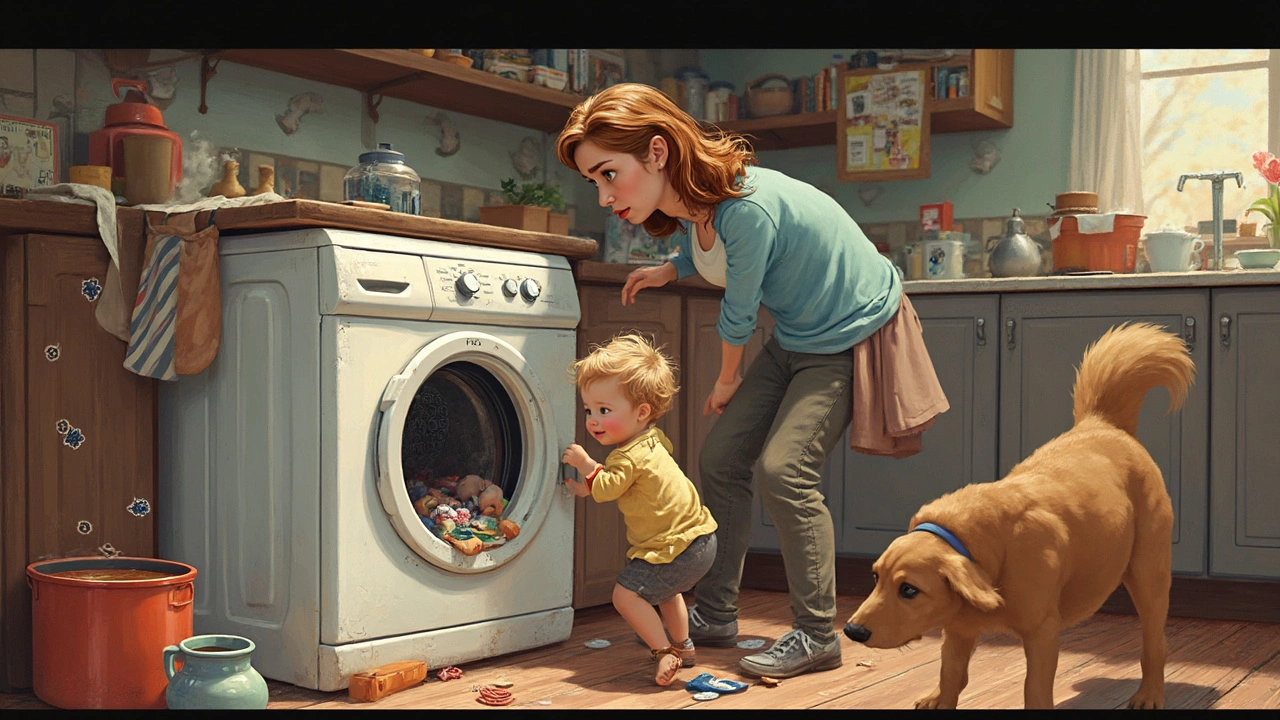Dryer Troubleshooting: Simple Fixes for Everyday Problems
If your dryer is acting up, you don’t have to wait for a technician right away. Most issues are caused by things you can check and fix yourself. Below you’ll find clear steps for the most common problems, plus advice on when it’s time to call a professional.
Common Dryer Problems and How to Fix Them
Dryer won’t heat. First, make sure the power cord is plugged in and the outlet works. Check the circuit breaker – a tripped breaker can stop the heating element. If the dryer has a lint filter, clean it; a clogged filter can overheat and shut off the heat. Next, look at the vent hose. A blocked vent restricts airflow and can cause the dryer to overheat, which often triggers a safety shut‑off. Disconnect the hose and clear any lint or debris. If the dryer still stays cool, the heating element may be broken. You can locate the element (usually behind the drum) and test it with a multimeter. A broken element needs replacement.
Dryer isn’t tumbling. Start by checking the door latch. The dryer won't spin if the latch thinks the door is open. Make sure the latch clicks fully into place. If the latch is fine, listen for a humming sound when you start a cycle. A humming dryer often means the belt is broken or slipped off the motor pulley. Open the dryer cabinet (unplug first!) and inspect the belt. If it’s broken, replace it – kits are cheap and come with step‑by‑step guides. If the belt looks okay, the motor may be worn out and need a professional replace.
Loud noises or rattling. Noises can come from a few places. A thumping sound usually points to a loose drum belt or worn drum rollers. Check the rollers for wobble; replace any that feel rough. A squealing noise often means a worn drum bearing – that also needs a pro. Lastly, small objects like coins can slip into the dryer drum and cause clanking. Look inside the drum and remove any foreign items.
Dryer takes too long to dry. This often ties back to poor airflow. Clean the lint filter after every load. Then, clean the vent hose and the external vent cap outside your house. A 4‑inch vent should have no bends and be as short as possible. Also, check the moisture sensor bars inside the drum – they can get coated with fabric softener residue. Wipe them with a soft cloth and a little rubbing alcohol.
When to Call a Professional
Most minor issues are DIY‑friendly, but some problems are best left to the pros. If you suspect an electrical fault, like a burnt heating element or a faulty control board, don’t try to repair it yourself – it’s dangerous. Also, if the dryer still won’t run after you’ve checked the power, belt, and motor, a professional diagnosis will save time and avoid further damage. Finally, if the dryer is older than 10 years and you’re facing repeated breakdowns, consider whether a repair is worth the cost compared to a new, energy‑efficient model.
Keeping your dryer in good shape is mostly about regular cleaning and quick checks. Clear the lint filter, keep the vent clear, and give the drum a once‑in‑a‑while wipe‑down. Those simple habits prevent most of the common headaches you’ll face.
Now you have a handy set of steps to tackle dryer problems on your own. Try these fixes first – you’ll often get your dryer back in action without a pricey call‑out. And if the issue sticks around, you know exactly when it’s time to bring in an expert.

Why Is My Tumble Dryer Not Spinning Properly?
Troubles with your tumble dryer not spinning can be a real headache, but don’t fret! It could be as simple as a safety switch or even overloaded laundry. This article uncovers common reasons your dryer might not be doing its job and offers practical solutions to get it spinning again. From belt issues to motor problems, fixing your dryer could be easier than you think.